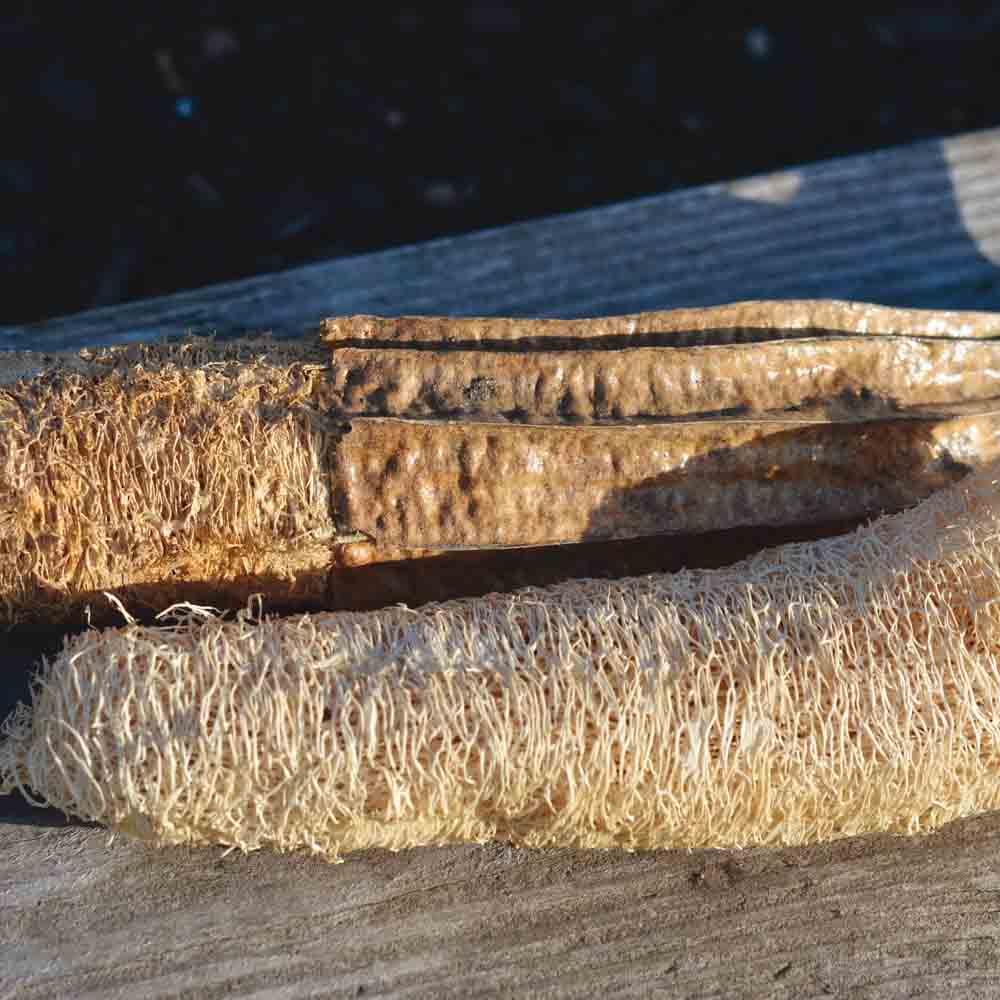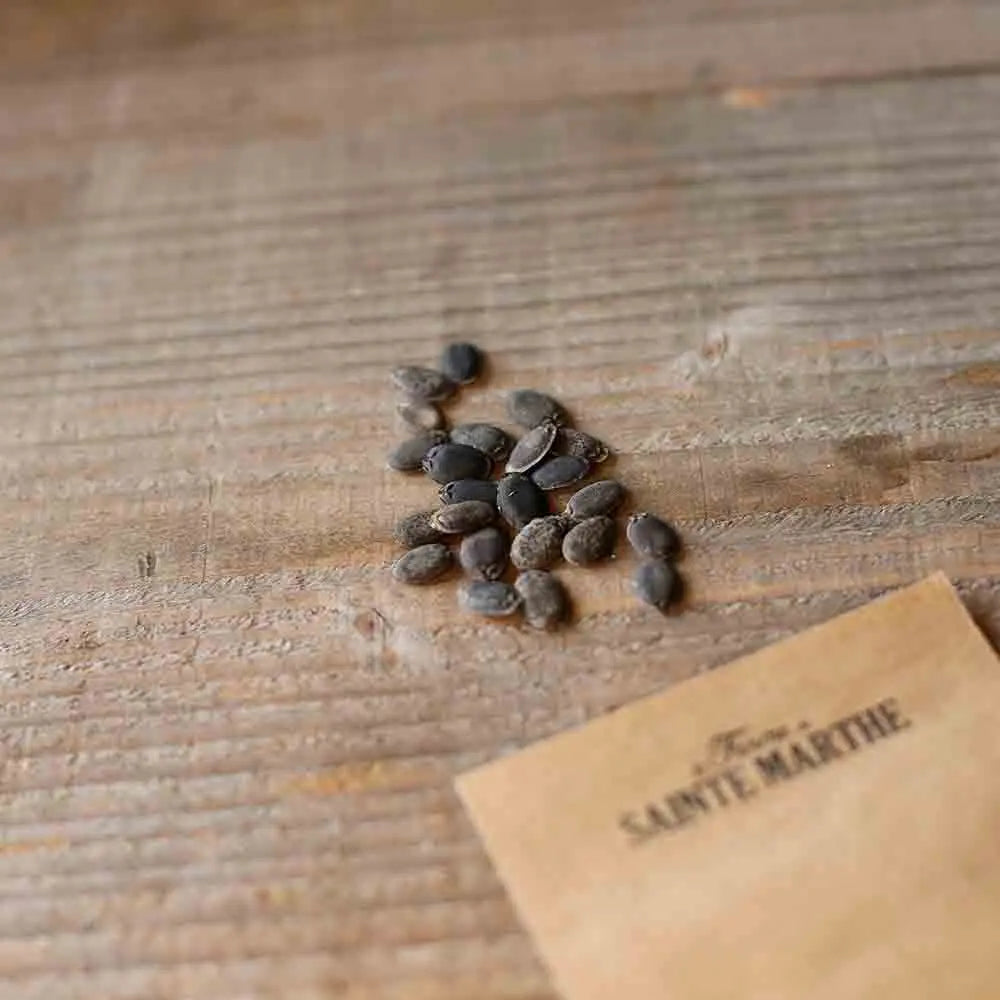LUFFA SPONGE SQUASH AB
Luffa cylindrica
Sponge gourd, sometimes known as luffa, is an ornamental, inedible squash. This trailing variety, which requires training or poles, produces 3 to 5 fruits per 30 to 50 cm plant. It requires plenty of heat to mature.
When dried, you get a vegetable sponge that is used in the same way as a horsehair glove. It is decorative and can be stored indefinitely.
How to successfully sow sponge gourds
Sowing: in April, in pots in a bright location (temperature 12°C minimum, the seeds need warmth to germinate), place the seeds on their edges. Be careful when watering; you will need to keep the soil moist with a sprayer but not excessively so as not to rot the seed. Place your pots near a light source.
Growing Sponge Gourd
Plant out in a sunny position in mid-May, 1 m apart in all directions for non-running varieties and 1.20 m in the rows and 2 m between rows for running varieties. Watering. Adding compost is recommended.
Pinch the stems to stimulate development.
Hoe and weed. Mulch the base to limit weed growth and preserve moisture. Water at the base in summer without wetting the foliage.
How to get a sponge?
When the fruit is ripe, cut off the end and remove all the seeds and flesh. Let it dry.
My pumpkin plant is not producing flowers or fruit.
This is a common problem encountered in many plants in the Cucurbitaceae family.
High temperatures: in fact, it is very likely that the flowers borne by the plants are only male flowers (female flowers are distinguished by the presence of a swelling at the base, resembling a very young fruit). The high temperatures have affected the formation of female flowers and the quality of the pollen in the male flowers. Despite the presence of pollinating insects, there are therefore no fruits.
Lack of pollination: Pollination is carried out by pollinating insects moving from a male flower to a female flower. If your garden lacks these, then pollination and therefore fruiting will not occur. Attract pollinators near your cucurbit crops by sowing floral mixes, for example.
Harvesting and preserving squash
Between September and November, usually around October before the frost.
One of the best ways to know when to harvest your squash is to observe the stem, which turns corky when the fruit is ready.
Be careful, never pick up squash by this famous stalk because this would cause invisible lesions, which inevitably cause rot. The fruit should be cut as close as possible to the stem, left to dry for a day in the sun, then brought inside to a warm place, without knocking them of course, in a dry and ventilated place: between 12 and 20°C. For small quantities, the top of a cupboard or wardrobe in the house is ideal.









